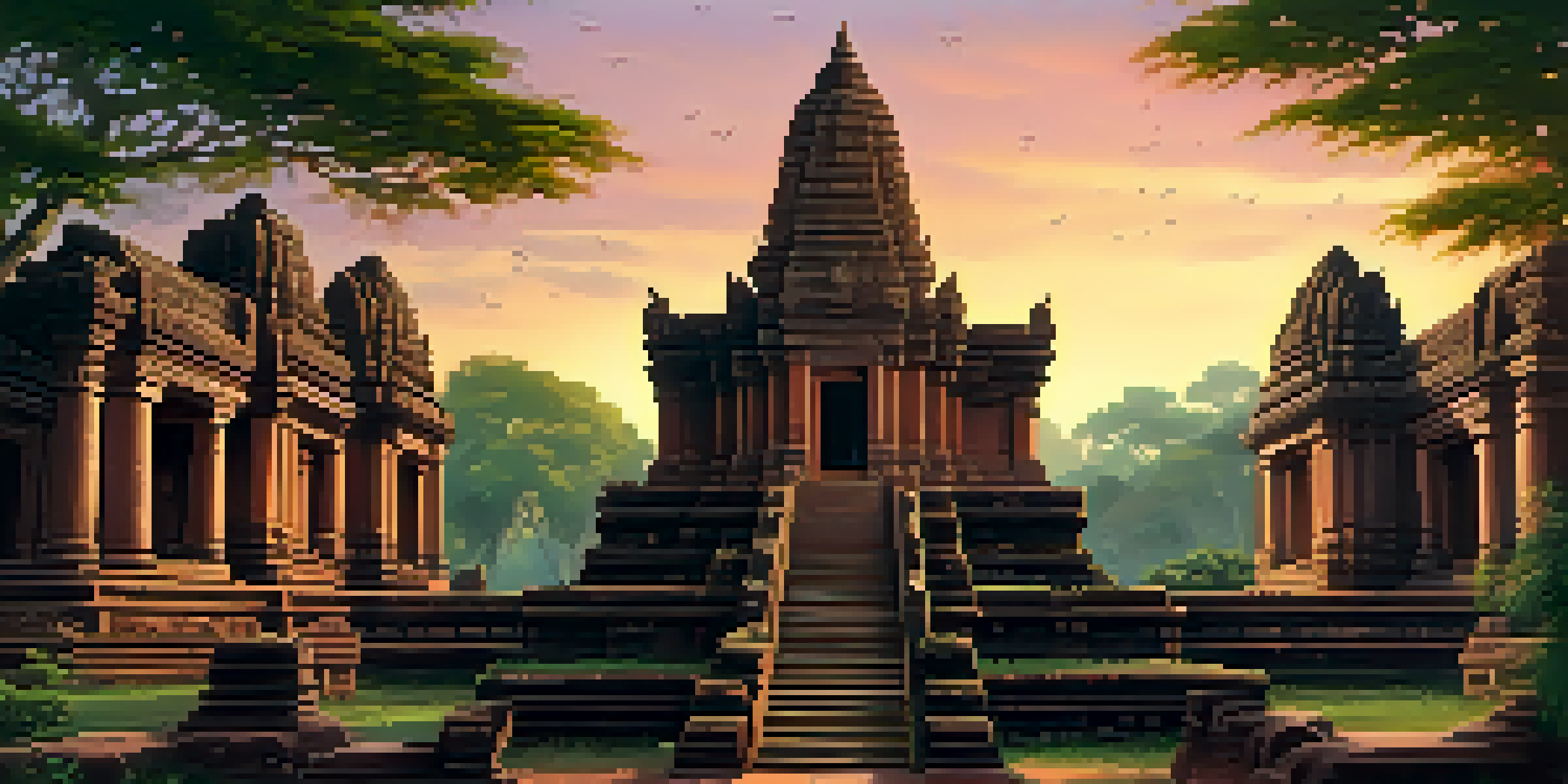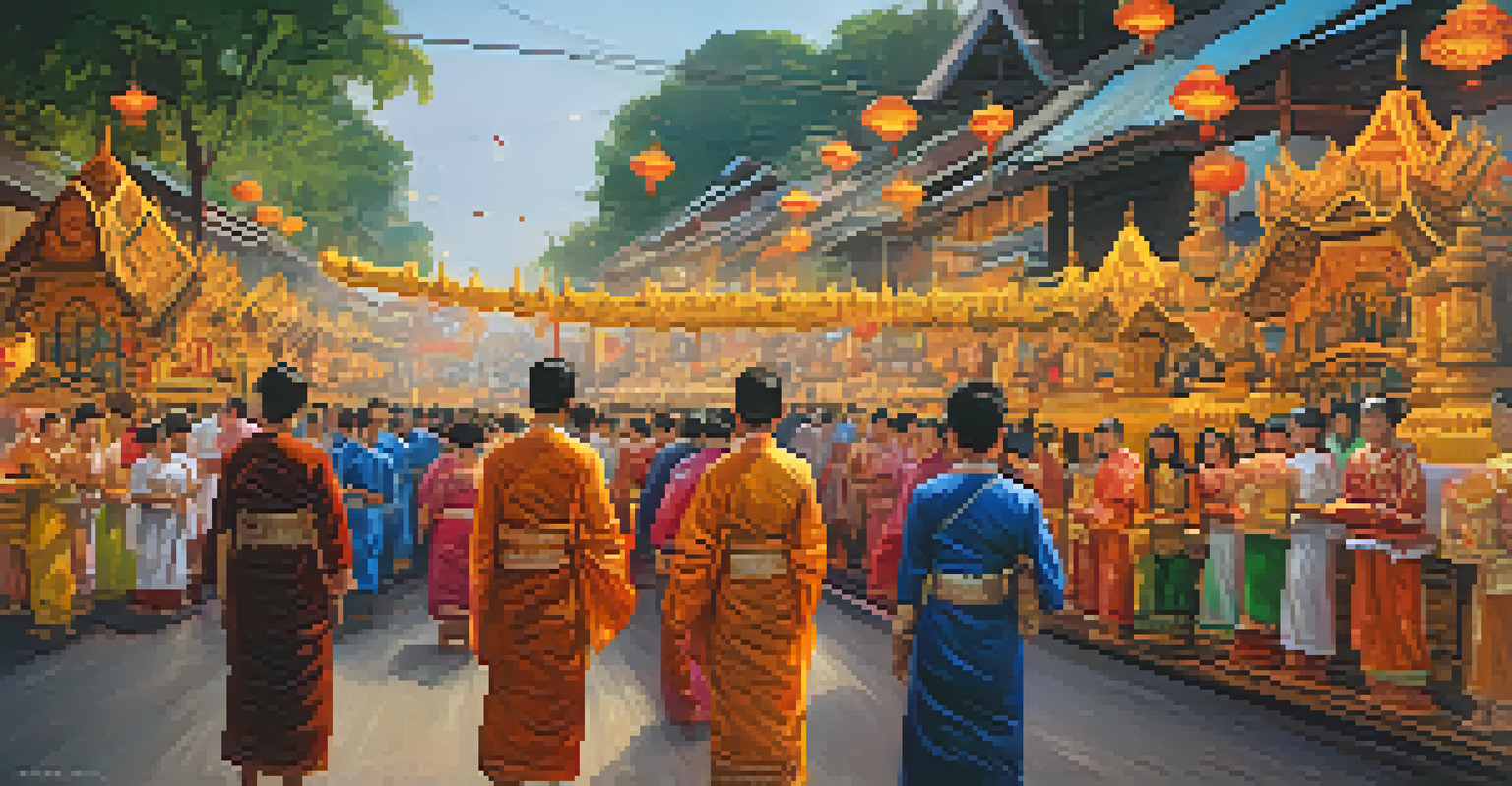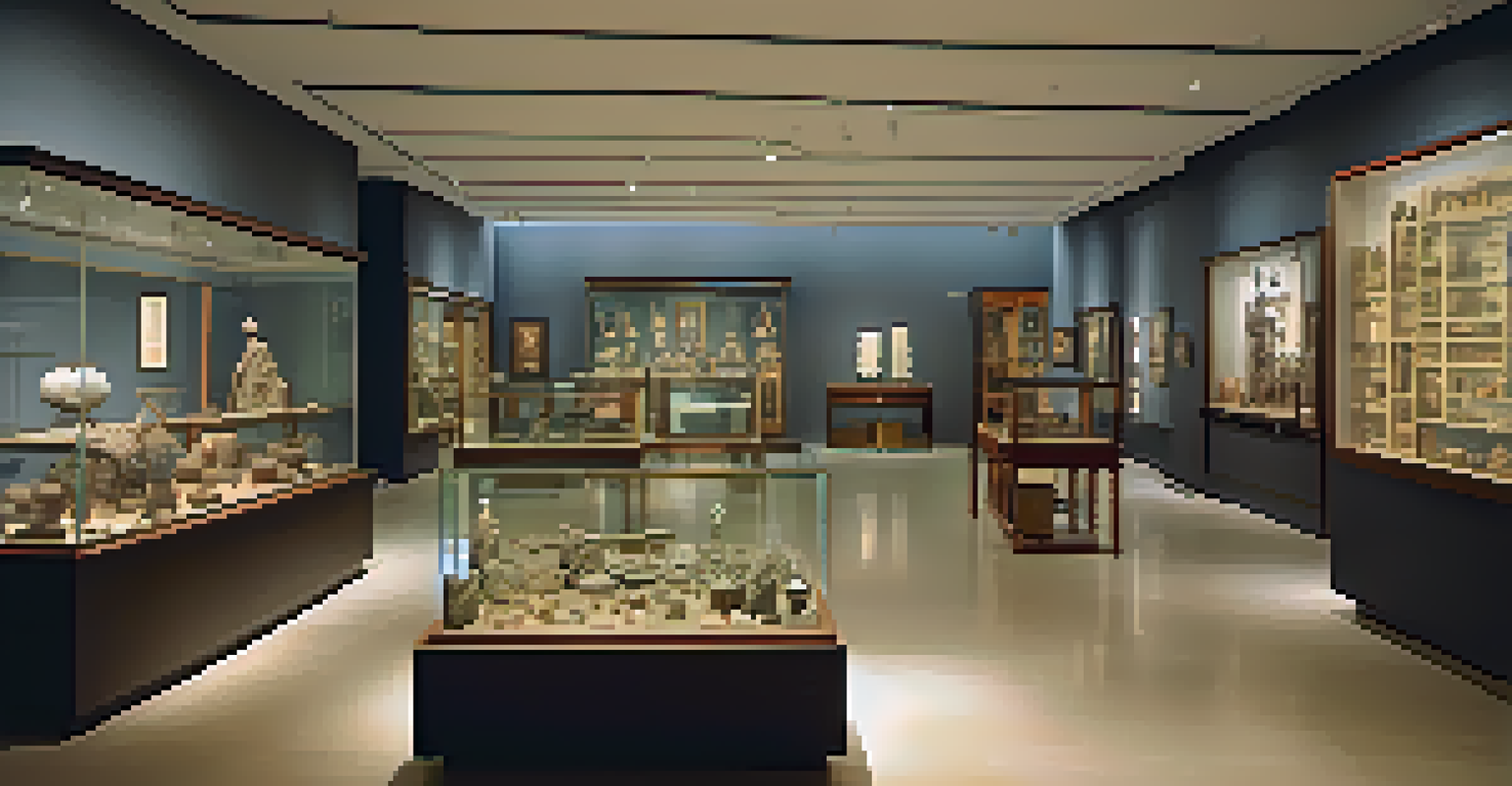Discovering Thailand's History in Nakhon Ratchasima

Introduction to Nakhon Ratchasima's Historical Significance
Nakhon Ratchasima, often referred to as Korat, is a city that holds a pivotal place in Thailand's history. Located in the northeastern region, it serves as a gateway to the rich cultural heritage of Isaan. The city has witnessed numerous historical events that shaped not just the local area but the entire nation.
History is not a burden on the memory but an illumination of the soul.
As a strategic military base and trade hub, Nakhon Ratchasima played a significant role in the ancient Khmer Empire. Its proximity to the Khmer ruins of Phimai highlights its importance during the 11th to 13th centuries. This blend of history and culture offers a unique perspective on the evolution of Thailand.
Visiting Nakhon Ratchasima allows travelers to step back in time and appreciate the influences that have molded modern Thai society. From ancient ruins to colonial architecture, every corner tells a story waiting to be discovered.
Exploring the Ancient Khmer Ruins of Phimai
One of the crown jewels of Nakhon Ratchasima's historical sites is the Phimai Historical Park. This impressive complex features well-preserved Khmer architecture dating back to the 11th century, showcasing the artistic skills of that era. The main temple, dedicated to the Hindu god Shiva, is a stunning example of sandstone construction.

Walking through the park, visitors can marvel at the intricate carvings and massive doorways that reflect the grandeur of the Khmer Empire. The layout of the temple complex is designed to symbolize Mount Meru, the center of the universe in Hindu cosmology, which adds to its spiritual significance.
Nakhon Ratchasima's Rich History
Nakhon Ratchasima, or Korat, is a historical gateway in Thailand, showcasing influences from the Khmer Empire and significant events that shaped the nation.
Phimai not only serves as a remarkable historical site but also as a cultural hub where festivals and events celebrate the region's heritage. Exploring these ruins offers an in-depth understanding of the historical ties between Thailand and its neighboring countries.
The Historical Importance of the Korat Plateau
The Korat Plateau, where Nakhon Ratchasima is situated, has been a crucial area throughout Thai history. Known for its fertile soil and strategic location, it has attracted various civilizations over the centuries. The plateau has been inhabited since prehistoric times, evidenced by archaeological findings that reveal early human settlements.
To know where you are going, you must know where you have been.
During the Dvaravati period, the area became a significant center for trade and cultural exchange, connecting different regions of Southeast Asia. This rich history of interaction contributed to the diverse cultural fabric seen in Nakhon Ratchasima today.
Understanding the Korat Plateau's historical context provides valuable insights into the development of Thai civilization and its ongoing evolution. It highlights how geographical features can influence cultural and societal growth.
Nakhon Ratchasima's Role in Thai Independence
Nakhon Ratchasima also played a notable role during Thailand's struggle for independence. In the early 20th century, the city became a focal point for political movements advocating for reform and modernization. These efforts were crucial in shaping the country's trajectory toward a more democratic governance structure.
The city was home to several prominent figures who fought for the rights and freedoms of the Thai people. Their contributions are commemorated in various local monuments and memorials, serving as a reminder of the sacrifices made.
Cultural Festivals Celebrate Heritage
The city hosts vibrant festivals, such as the Phimai Festival, that honor its ancient Khmer roots and promote community engagement through traditional performances and rituals.
Exploring Nakhon Ratchasima today allows visitors to appreciate the resilience and determination of its people throughout history. The city's legacy of activism remains an integral part of its identity.
Cultural Heritage: Festivals and Traditions in Korat
Nakhon Ratchasima is rich in cultural heritage, with numerous festivals and traditions that reflect its historical significance. The city celebrates events like the Phimai Festival, which honors the ancient Khmer culture with traditional performances, food, and rituals. This vibrant celebration attracts both locals and tourists, fostering community spirit.
Another notable tradition is the annual candle festival, where beautifully crafted candles are paraded through the streets. This event not only showcases artistic talents but also symbolizes the Buddhist practice of giving and merit-making.
Engaging in these festivals offers a deeper understanding of the local culture and its historical roots. It's a chance for visitors to connect with the community and experience the lively traditions that have been passed down through generations.
Local Museums Preserving Nakhon Ratchasima's History
To further delve into Nakhon Ratchasima's history, local museums serve as treasure troves of knowledge. The Korat Museum, for instance, houses artifacts that chronicle the city's development from prehistoric times to the present day. Exhibits include ancient tools, textiles, and documents that provide a glimpse into daily life throughout the ages.
Another significant museum is the Phimai National Museum, which focuses on the Khmer influence in the region. Here, visitors can find sculptures and relics that highlight the artistic achievements of the Khmer Empire, deepening the understanding of its cultural impact.
Museums Preserve Local History
Local museums like the Korat Museum and Phimai National Museum offer valuable insights into the city's evolution, showcasing artifacts that highlight its cultural and historical significance.
These museums not only preserve history but also promote education and awareness about the region's heritage. They are essential stops for anyone looking to grasp the full story of Nakhon Ratchasima.
Conclusion: Embracing the Historical Legacy of Nakhon Ratchasima
In conclusion, Nakhon Ratchasima offers a captivating journey through Thailand's rich history. From ancient Khmer ruins to vibrant cultural festivals, the city showcases a diverse heritage that continues to influence modern Thai identity. Each historical site and tradition provides insights into the resilience and creativity of its people.
Traveling through Korat not only enriches one's understanding of Thailand but also fosters a connection to the broader story of Southeast Asia. It’s a reminder of how history shapes our present and future.

Embracing the historical legacy of Nakhon Ratchasima invites travelers to appreciate the intricate tapestry that makes up this remarkable region. Whether you’re an avid historian or a casual traveler, the experiences here will leave a lasting impression.